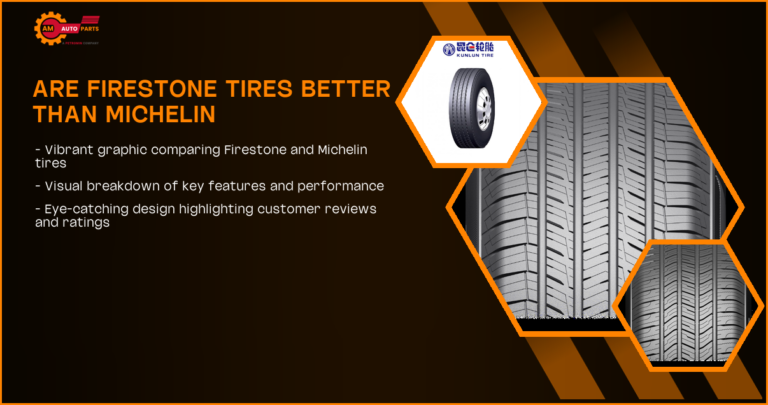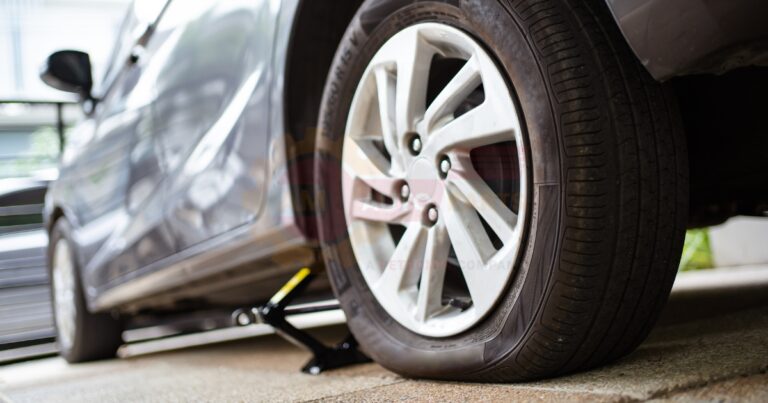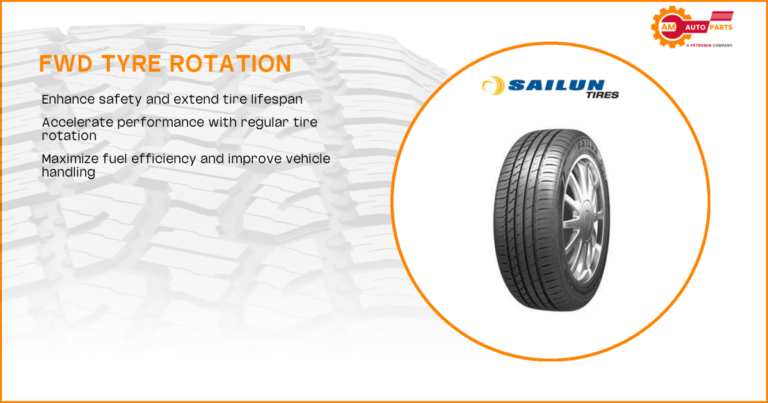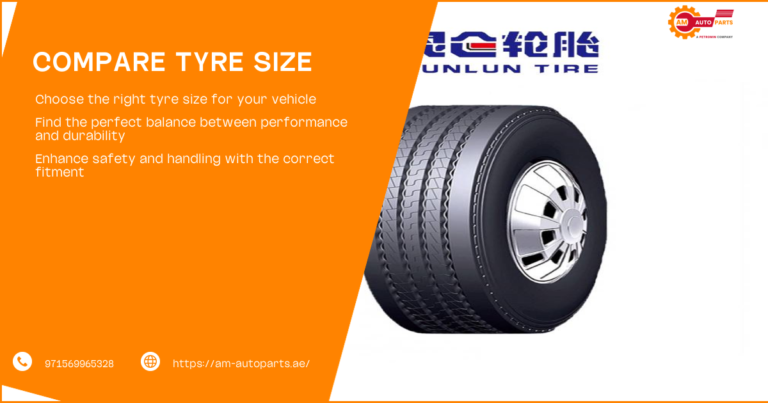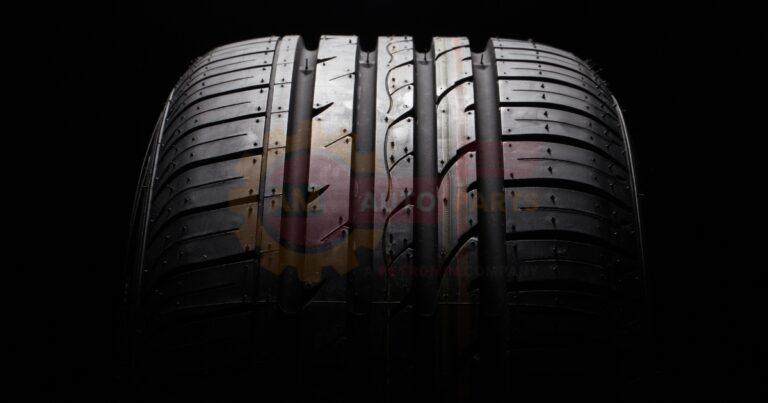Embarking on a long road trip in the UAE can be an exhilarating experience, offering a unique blend of stunning landscapes and cultural landmarks. However, ensuring your vehicle is ready for the journey is crucial for a safe and enjoyable trip. This comprehensive guide will walk you through essential steps to prepare your car for long road trips in the UAE, ensuring both safety and comfort.
Essential Pre-Trip Vehicle Checks
Inspect Tires and Check Pressure
Before hitting the road, it’s vital to inspect your tires for any signs of wear and tear. Proper tire maintenance not only ensures safety but also enhances fuel efficiency. Check the tire pressure using a reliable gauge and ensure it matches the manufacturer’s recommended levels. Under-inflated tires can lead to poor handling and increased fuel consumption, while over-inflated tires may cause a bumpy ride.
- Check for any visible damage or punctures.
- Ensure the tread depth is adequate for safe driving.
- Rotate tires if necessary to promote even wear.
Examine Fluid Levels
Fluids are the lifeblood of your vehicle, and maintaining optimal levels is crucial for smooth operation. Check the engine oil, coolant, brake fluid, and windshield washer fluid. Low fluid levels can lead to engine overheating or brake failure, which are particularly dangerous during long trips.
- Top up engine oil if it’s below the recommended level.
- Ensure the coolant is at the correct level to prevent overheating.
- Check brake fluid and refill if necessary.
Test Battery Condition
A reliable battery is essential for starting your car and powering electrical systems. Test the battery’s charge and inspect for any corrosion on the terminals. A weak battery can leave you stranded, especially in remote areas of the UAE.
- Clean any corrosion from battery terminals.
- Ensure the battery is securely mounted.
- Consider replacing the battery if it’s more than three years old.
Evaluate Brake Performance
Brakes are a critical safety component, and their performance should be evaluated before any long journey. Listen for any unusual noises when braking and check the brake pads for wear. If the brakes feel spongy or unresponsive, have them inspected by a professional.
- Check brake pads and rotors for wear.
- Test the brake pedal for firmness.
- Ensure the brake fluid is at the correct level.
Verify Lights and Signals
Properly functioning lights and signals are essential for safe driving, especially during night travel or adverse weather conditions. Check all exterior lights, including headlights, taillights, brake lights, and turn signals, to ensure they are working correctly.
- Replace any burnt-out bulbs.
- Clean the light covers for maximum visibility.
- Test the hazard lights for emergency situations.
Planning Your UAE Road Trip Route
Map Out Rest Stops and Fuel Stations
Planning your route in advance can save time and reduce stress during your journey. Identify rest stops and fuel stations along your route to ensure you have ample opportunities to refuel and take breaks. This is particularly important in the UAE, where long stretches of road may have limited services.
- Use a GPS or map app to plan your route.
- Identify rest areas for breaks and meals.
- Locate fuel stations to avoid running low on gas.
Research Road Conditions and Traffic Patterns
Understanding road conditions and traffic patterns can help you avoid delays and ensure a smoother journey. Check for any roadworks or closures that may affect your route and plan alternative paths if necessary.
- Check local traffic reports for updates.
- Avoid peak travel times to reduce congestion.
- Be aware of any toll roads on your route.
Consider Climate and Weather Factors
The UAE’s climate can vary significantly, with scorching desert heat and occasional sandstorms. Consider the weather conditions when planning your trip and prepare accordingly. Ensure your vehicle’s air conditioning is functioning well to keep passengers comfortable.
- Check the weather forecast for your travel dates.
- Prepare for sudden weather changes, such as sandstorms.
- Ensure your vehicle’s climate control system is working properly.
Packing Essentials for a Long Journey
Emergency Kit Supplies
An emergency kit is a must-have for any long road trip, providing essential supplies in case of unexpected situations. Pack items such as a first-aid kit, flashlight, jumper cables, and basic tools. These supplies can be invaluable if you encounter a breakdown or minor accident.
- Include a first-aid kit with bandages and antiseptics.
- Pack a flashlight with extra batteries.
- Carry jumper cables and a basic tool kit.
Comfort Items for Passengers
Long journeys can be tiring, so it’s important to ensure passenger comfort. Pack pillows, blankets, and travel cushions to make the ride more enjoyable. Comfortable passengers are less likely to become restless or irritable during the trip.
- Bring travel pillows and blankets.
- Pack snacks and drinks for the journey.
- Include travel cushions for added comfort.
Entertainment Options for the Drive
Keeping passengers entertained can make the journey more enjoyable and help pass the time. Consider packing books, games, or electronic devices with pre-downloaded content. This is especially important for families traveling with children.
- Pack books or e-readers for reading.
- Bring portable gaming devices or tablets.
- Download movies or music playlists for entertainment.
Ensuring Vehicle Safety and Efficiency
Schedule a Professional Inspection
A professional inspection can identify potential issues that may not be apparent during a basic check. Schedule an inspection with a trusted mechanic to ensure your vehicle is in top condition for the trip. This can prevent unexpected breakdowns and ensure a smooth journey.
- Have a mechanic check the engine and transmission.
- Inspect the suspension and steering components.
- Ensure the exhaust system is functioning properly.
Address Any Existing Mechanical Issues
If your vehicle has any known mechanical issues, address them before embarking on your trip. Ignoring these problems can lead to more significant issues during your journey, potentially leaving you stranded.
- Repair any known engine or transmission issues.
- Fix any leaks or unusual noises.
- Ensure all systems are functioning correctly.
Update Vehicle Navigation Systems
An updated navigation system can help you find the best routes and avoid getting lost. Ensure your GPS or map app is up-to-date with the latest maps and traffic information. This can save time and reduce stress during your trip.
- Update your GPS with the latest maps.
- Download offline maps for areas with poor signal.
- Familiarize yourself with the navigation system’s features.
Legal and Documentation Requirements
Verify Insurance Coverage
Before setting off, verify that your vehicle insurance is up-to-date and provides adequate coverage for your trip. This is crucial for protecting yourself and your vehicle in case of an accident or other incidents.
- Check your insurance policy for coverage details.
- Ensure your policy covers long-distance travel.
- Carry a copy of your insurance documents in the car.
Carry Necessary Identification and Permits
Ensure you have all necessary identification and permits for your journey. This includes your driver’s license, vehicle registration, and any required permits for specific areas or activities.
- Carry your driver’s license and vehicle registration.
- Ensure any necessary permits are up-to-date.
- Keep identification documents easily accessible.
Familiarize with UAE Traffic Laws
Understanding UAE traffic laws is essential for safe and legal driving. Familiarize yourself with local regulations, including speed limits, seatbelt requirements, and mobile phone usage while driving.
- Learn the speed limits for different road types.
- Understand seatbelt and child safety seat laws.
- Be aware of mobile phone usage restrictions while driving.
Maximizing Comfort During Extended Drives
Adjust Seating and Mirrors Properly
Proper seating and mirror adjustments can enhance comfort and safety during long drives. Adjust the driver’s seat to ensure easy access to controls and a clear view of the road. Proper mirror positioning reduces blind spots and improves visibility.
- Adjust the seat for optimal comfort and control.
- Position mirrors to minimize blind spots.
- Ensure all passengers have comfortable seating.
Plan Regular Stretch Breaks
Taking regular stretch breaks is essential for maintaining comfort and alertness during long drives. Plan stops every couple of hours to stretch your legs and refresh your mind. This helps prevent fatigue and keeps you focused on the road.
- Schedule breaks every two hours.
- Use rest stops for stretching and relaxation.
- Encourage passengers to move around during breaks.
Maintain Proper Vehicle Climate Control
A comfortable cabin temperature is crucial for an enjoyable journey, especially in the UAE’s hot climate. Ensure your vehicle’s air conditioning system is functioning well and adjust the temperature to suit all passengers.
- Check the air conditioning system before the trip.
- Adjust the temperature for passenger comfort.
- Use sunshades to reduce heat inside the vehicle.
Fuel Efficiency Tips for Long UAE Road Trips
Maintain Steady Speeds on Highways
Maintaining a steady speed on highways can improve fuel efficiency and reduce wear on your vehicle. Use cruise control where appropriate to maintain a consistent speed and save fuel.
- Avoid sudden acceleration and braking.
- Use cruise control for consistent speeds.
- Monitor speed limits to avoid fines and save fuel.
Avoid Excessive Idling in Traffic
Excessive idling can waste fuel and increase emissions. Turn off the engine if you’re stopped for an extended period, such as at a long traffic light or in heavy traffic.
- Turn off the engine during long stops.
- Avoid idling in traffic jams.
- Plan routes to minimize time spent in traffic.
Use Cruise Control When Appropriate
Using cruise control on open highways can help maintain a steady speed and improve fuel efficiency. It’s particularly useful on long stretches of road with minimal traffic.
- Engage cruise control on open highways.
- Adjust settings for optimal fuel efficiency.
- Use cruise control to reduce driver fatigue.
Handling Common Road Trip Challenges
Dealing with Driver Fatigue
Driver fatigue is a common challenge during long road trips. To combat fatigue, take regular breaks, stay hydrated, and share driving responsibilities if possible. Avoid driving late at night when you’re more likely to feel tired.
- Take breaks every two hours to rest.
- Stay hydrated and avoid heavy meals.
- Share driving duties with other licensed passengers.
Navigating Unfamiliar Roads
Navigating unfamiliar roads can be challenging, especially in remote areas. Use a reliable GPS or map app to guide you and plan your route in advance. Familiarize yourself with the route to reduce stress and avoid getting lost.
- Use a GPS or map app for navigation.
- Plan your route before starting the journey.
- Be prepared for detours or unexpected changes.
Managing Vehicle Breakdowns
Vehicle breakdowns can occur unexpectedly, so it’s important to be prepared. Carry an emergency kit with essential tools and supplies, and know how to contact roadside assistance if needed. Scorching Dubai tyres heat up quickly on the hot roads of the city Drivers need to be careful and check their Top UAE SUV rubber offers strong and durable tires for big cars in the United Arab Emirates These special tires help SUVs drive smoothly on different types of roads in the UAE
Optimal UAE EV tires are special wheels made for electric cars in the United Arab Emirates These tires help electric vehicles drive better in hot desert conditions and save more energy Dubai vehicle maintenance is important to keep cars running smoothly in the hot desert climate Regular
Tire inspection guidelines Check your tires regularly for proper air pressure and look for signs of wear or damage to keep your vehicle safe on the road Tire durability assessment checks how long tires can last It tests tires to see if they can handle lots of driving without wearing out
- Keep an emergency kit in the car.
- Know how to contact roadside assistance.
- Have a plan for dealing with breakdowns.
Post-Trip Vehicle Care
Perform a Thorough Cleaning
After a long road trip, give your vehicle a thorough cleaning to remove dirt and debris. This helps maintain the vehicle’s appearance and prevents damage from accumulated grime.
- Wash the exterior to remove dust and dirt.
- Vacuum the interior to remove debris.
- Clean windows and mirrors for clear visibility.
Schedule Maintenance Check
A post-trip maintenance check can identify any issues that arose during your journey. Schedule a check-up with a mechanic to ensure your vehicle remains in good condition.
- Inspect the vehicle for any signs of wear.
- Check fluid levels and top up if necessary.
- Address any issues identified during the trip.
Address Any Issues That Arose During Travel
If any issues arose during your trip, address them promptly to prevent further damage. This includes mechanical problems, unusual noises, or any warning lights that appeared.
- Repair any mechanical issues immediately.
- Investigate any warning lights or unusual sounds.
- Ensure the vehicle is ready for future trips.
By following these comprehensive tips on how to prepare your car for long road trips in the UAE, you can ensure a safe, efficient, and enjoyable journey. Proper preparation and maintenance not only enhance your travel experience but also contribute to road safety, reducing the risk of accidents by up to 20%, according to the UAE Ministry of Interior. Safe travels.
FAQs
What safety precautions should you take when driving long distances in the UAE?
When driving long distances in the UAE, it’s important to ensure your vehicle is in good condition and equipped with an emergency kit. Plan your route in advance, taking into account rest stops and fuel stations. Additionally, stay alert and take regular breaks to avoid driver fatigue.
How do you ensure your car’s engine is ready for long rides through the desert?
To prepare your car’s engine for long desert rides, check the engine oil and coolant levels, and ensure the air filter is clean. A well-maintained engine is less likely to overheat in the desert heat. Consider having a professional mechanic inspect the engine for any potential issues.
What type of vehicle is best suited for UAE road trips?
For UAE road trips, a vehicle with good fuel efficiency and reliable performance is ideal. SUVs and 4x4s are popular choices due to their ability to handle diverse terrains. Ensure the vehicle has a functioning air conditioning system to cope with the desert climate.
How often should you stop during a long car journey in the UAE?
During a long car journey in the UAE, it’s recommended to stop every two hours for a break. Regular stops help prevent driver fatigue and allow passengers to stretch and refresh. Plan your stops at rest areas or fuel stations for convenience.
What emergency supplies should you have in your car for a long drive in the UAE?
For a long drive in the UAE, carry an emergency kit with a first-aid kit, flashlight, jumper cables, and basic tools. These supplies can be crucial in case of a breakdown or minor accident. Additionally, pack extra water and snacks for unexpected delays.

